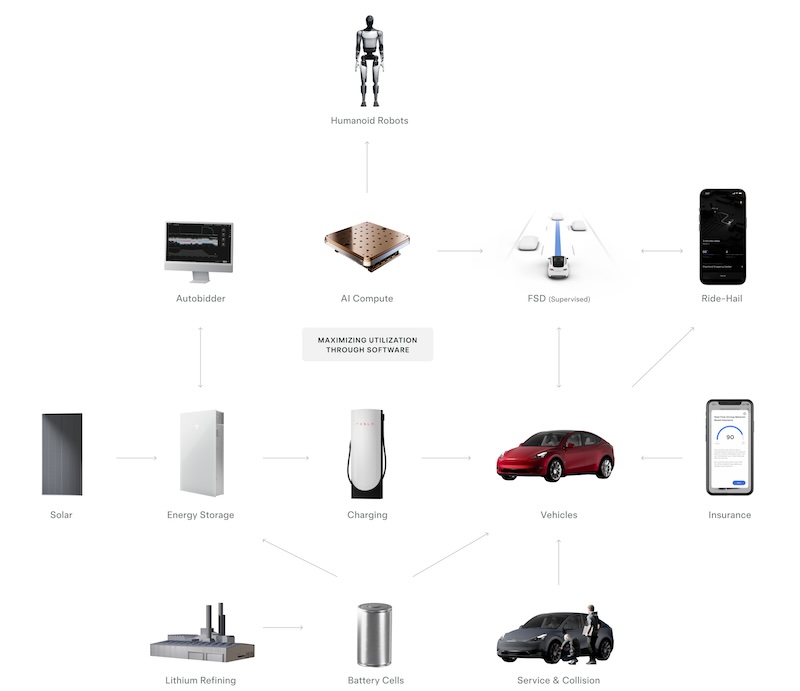For Tesla, the road to an all-electric, sustainable future runs straight through autonomy. Grace Tao, Tesla’s Global vice president in China, who outlined an ambitious vision for how self-driving vehicles will reshape the automotive industry while catalyzing rapid growth across the new energy vehicle sector.
“Autonomous Driving technology is revolutionizing the industry, becoming a key driver for new productivity growth in the new energy vehicle sector,” Tao stated matter-of-factly during her remarks. Her reasoning? Simply put, driverless cars powered by artificial intelligence can dramatically reduce human errors, enhancing road safety while optimizing efficiency through intelligent routing, scheduling, and integration with smart transportation systems.

It’s that tantalizing potential for compounding benefits that has Tesla going all-in on autonomous driving as a core competitive advantage. Tesla’s has invested heavily into developing its in-house self-driving stack, from the beastly Dojo Supercomputer training AI models to its in-house FSD processor powering its vision-based neural networks.
But the true strength of Tesla’s autonomous, Grace Tao explained, is the ability to leverage the hundreds of millions of real-world miles its camera-equipped fleet has already driven as a continuous data stream for machine learning. “Tesla’s FSD adopts a pure vision…utilizing a vision-based architecture and end-to-end neural networks trained on massive real-world data,” she noted.

This “ground truth” training information collected across over 1 million vehicles gives Tesla a unique edge when it comes to developing human-like driving behaviors and rapidly iterating the self-driving software via over-the-air updates. And lest there was any doubt about sharing this tech with other automakers, Tao reiterated CEO Elon Musk‘s stance that the company is “willing to license Tesla’s Autopilot and FSD capabilities” to rivals.
Beyond the core autonomy innovations, Tao highlighted several areas where self-driving EVs could spawn new industries and business models in the coming years. At the top of that list: autonomous ride-hailing services providing an affordable, sustainable alternative to traditional ride-share with much higher vehicle utilization rates. “This model not only increases vehicle utilization but also helps alleviate urban traffic congestion and reduce environmental pollution,” she said.
Grace Tao also pointed to the broader productivity gains autonomous tech could unleash across the logistics and transportation sectors by reducing reliance on human drivers and optimizing routing/scheduling through intelligent systems. Commercial autonomous trucking and freight could quickly become an economic game-changer, lowering costs while increasing efficiencies.
For all these impending industrial revolutions, Tao continually circled back to Tesla’s guiding mission: accelerating the world’s transition to sustainable energy powered by artificial intelligence. “As the world transitions towards a sustainable energy structure primarily based on solar power, and with the rapid development of artificial intelligence, productivity and production relations are being reshaped globally,” she stated.
Here, autonomous EVs are viewed as an ideal distribution platform to help accelerate solar/battery grid adoption while leveraging machine learning breakthroughs made possible by the immense real-world driving dataset Tesla is amassing. It’s that cherry on top of compounding technological synergies that has Tesla leaning so aggressively into autonomy as a key differentiator.
“Since entering the Chinese market a decade ago, Tesla has been building a closed-loop ecosystem integrating hardware and software for energy storage products, artificial intelligence, and robots, all centered around sustainable energy and AI technology,” Tao elaborated. “Tesla remains committed to technological innovation and, through its Giga Shanghai, will continue to collaborate with upstream and downstream partners in China to cultivate local talent, accelerate the integration of AI and the new energy industry, and contribute to the high-quality development of the sector.”
At this point, the scope of Tesla’s ambitions around autonomous driving starts seeming less about simple self-driving capabilities and more about a comprehensive rethinking of mobility, energy, and industrial productivity through the lens of AI and electrification. It’s a staggeringly complex convergence of bleeding-edge technologies all fueling a positive feedback loop of innovations building upon themselves.
Whether Tesla can ultimately execute on this autonomous grand vision and maintain a competitive edge remains to be seen, of course. Grace Tao’s commentary provided a remarkably transparent view into the driving forces motivating Tesla’s intense focus on self-driving vehicles as force multipliers for sustainable transformation across multiple sectors.
If nothing else, it’s clear Tesla has absolutely no intentions of pumping the brakes on autonomous driving anytime soon. In fact, the company seems to view the technology as a core propellant for accelerating the new energy transition through a cascading wave of industrial disruptions it has been feverishly architecting towards for over a decade now, autonomous EV isn’t just the endgame – it’s the means to an entirely reimagined AI-driven future for mobility and energy alike.
